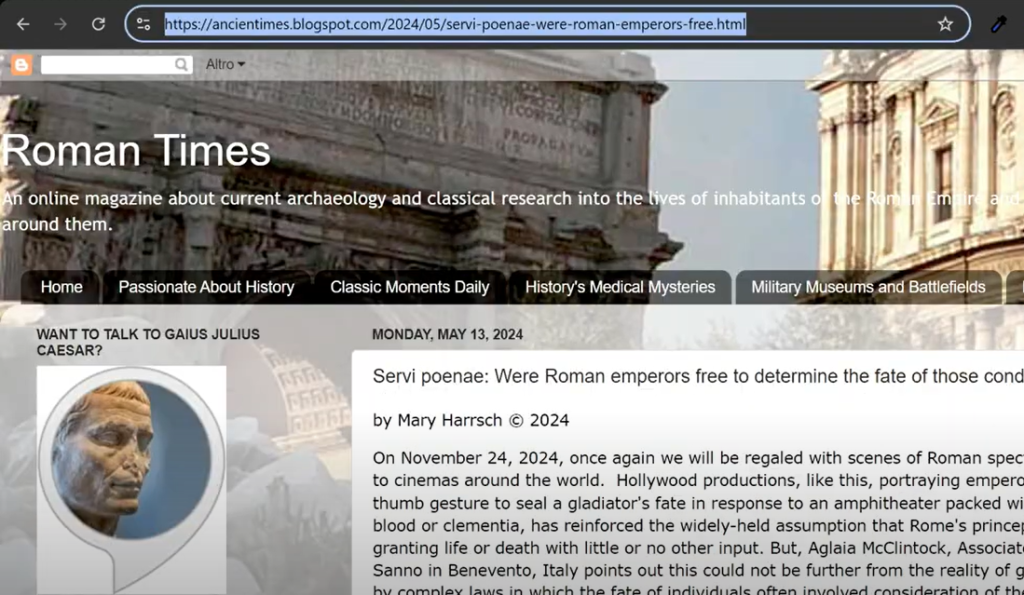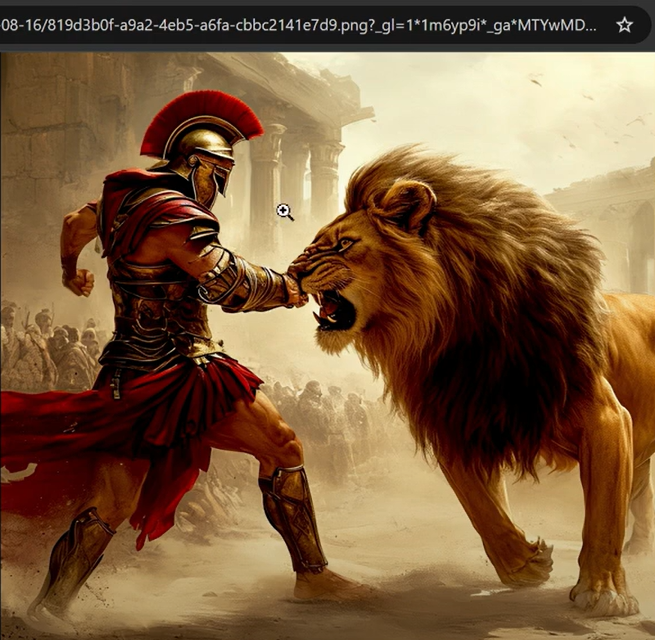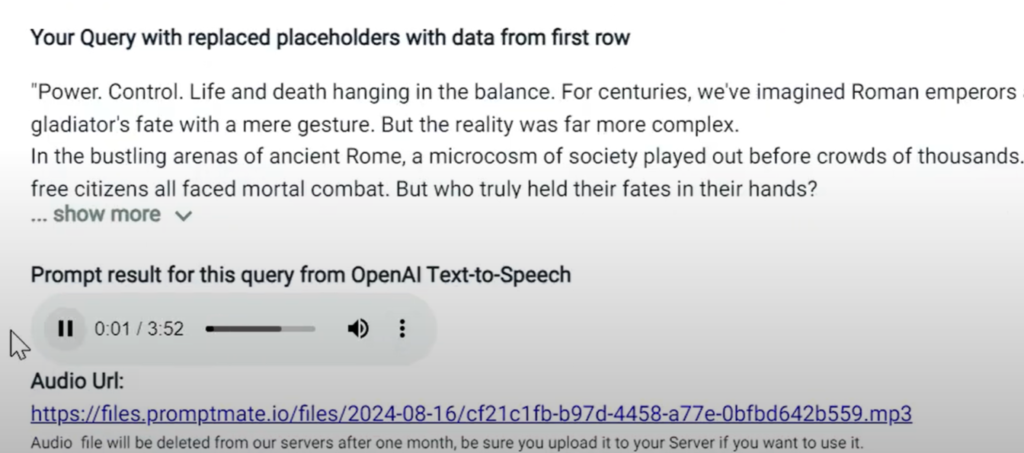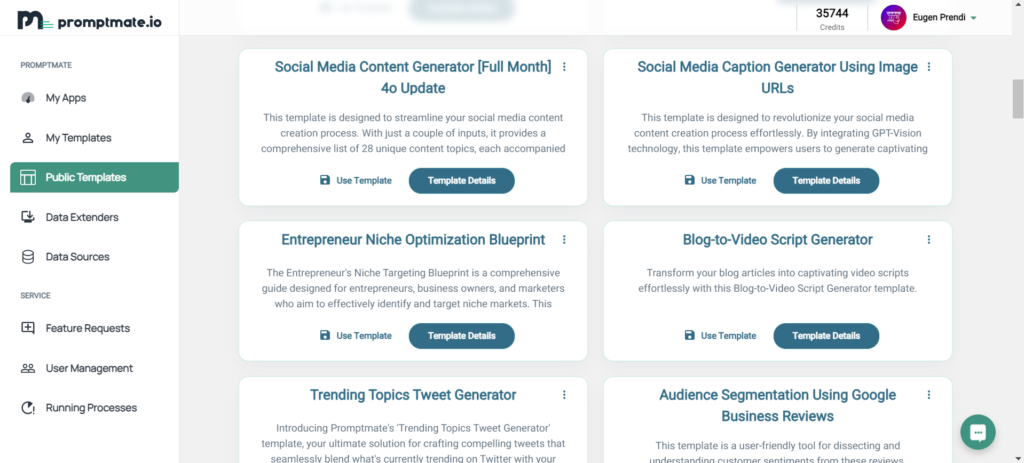In today’s digital world, where video content is king, there’s a growing trend in using artificial intelligence (AI) to generate compelling videos with minimal effort. Some of these AI-created videos are achieving millions of views on platforms like YouTube and TikTok—often ranging from 4 million to as high as 36 million views. What’s even more fascinating is that these videos are relatively simple to produce, thanks to advancements in AI tools. In this article, we’ll explore how AI can be leveraged to turn blog articles into full-length videos, complete with visuals and audio, offering a streamlined approach to content creation for anyone interested in building a YouTube or social media presence. Whether you’re interested in history, education, or another niche, these tools can take your blog content to new heights by transforming it into engaging, high-performing videos. Let’s dive into the step-by-step process to create these videos and the AI tools that make it possible.

By loading the video, you agree to YouTube’s privacy policy.
Learn more
Step 1: Turning Blog Articles into Scripts with AI
The first step in creating AI-powered videos involves transforming a blog article into a script. Let’s assume your niche is history, and your YouTube channel focuses on topics like the Roman Empire. To begin, you’ll need to grab the URL of a relevant blog article. One of the most efficient AI tools for this process is PromptMate, which allows you to input the blog’s URL and generate a full-length script from it.

The key to making the script engaging is starting with a strong hook, just like a documentary would. Rather than welcoming viewers with a traditional greeting like “Welcome to my channel,” the script dives straight into the content, captivating the audience from the first sentence. For instance, a gripping introduction about power, control, and life-and-death decisions in the Roman Empire immediately pulls the viewer in. PromptMate streamlines this process, taking blog content and turning it into a seamless script, avoiding unnecessary intros and focusing solely on the storytelling aspect.

Step 2: Generating Visual Ideas for Your Video
Once you have the script, the next step is generating visual elements to complement the narration. AI tools can simplify this process by offering image suggestions based on the script’s content. For example, if the script discusses the power dynamics of Roman emperors, the AI might suggest an image of a close-up of an emperor’s hand holding a scepter, symbolizing authority. These visual ideas can be transformed into prompts for AI-based image generators such as Stability AI. Each part of the script gets matched with a corresponding visual concept, making the process of creating images not only faster but also highly aligned with the narrative of the video. The AI-generated images can then serve as the backbone for your video, especially when static visuals are required to convey historical or informational content. This method not only enhances the overall quality of the video but also ensures that the visuals align perfectly with the script, creating a more immersive experience for the viewer.


Step 3: Turning Scripts into Audio with AI Voice Generation
Now that you have both a script and visual concepts, it’s time to focus on the audio. Using AI-driven text-to-speech tools, you can easily convert your script into voiceover narration. One popular option is OpenAI’s text-to-speech technology, which allows you to select from a range of voices to match the tone and mood of your video. For instance, you can choose a deep, authoritative voice to narrate a history video, enhancing the drama of topics like the rise and fall of Roman emperors. The AI voice generator not only provides clear and natural-sounding audio but also eliminates the need for hiring voice actors, saving both time and money. The final product is a professional-sounding narration that enhances the storytelling aspect of the video. After generating the audio, it’s ready to be combined with the visuals you’ve created, making the video production process much more streamlined and efficient.

Step 4: Merging Visuals and Audio to Create the Video
With your visuals and audio ready, the next step is to bring everything together into a cohesive video. Tools like Canva make this process incredibly simple. By importing both your AI-generated images and the text-to-speech audio, you can arrange the visuals in sync with the narration. Each visual, timed correctly with the audio, helps to enhance the storytelling and make the content more engaging. Even though the images might be static, they can still effectively convey the key points of your script, especially when paired with a compelling voiceover. For those looking to elevate their videos even further, AI tools like Runway Gen 3 Alpha can animate these static images, turning them into dynamic visuals that simulate motion. This extra layer of animation can breathe life into your content, making the video more immersive for viewers. By the end of this process, you have a fully crafted video that is ready to captivate your audience, and all of this can be done with minimal manual input, thanks to the power of AI.

Step 5: Exploring Alternative AI Tools for Video Creation
While tools like Canva and Runway Gen 3 Alpha offer powerful solutions for creating videos, there are other AI-driven platforms worth exploring. One alternative is Magic Media, which allows you to inject prompts and generate images directly within the platform. This gives you even more flexibility in creating visuals tailored to your script. Another option is ChatGPT’s daily tool, which can also help generate relevant prompts for images. Both of these tools offer additional layers of creativity, allowing you to refine your visuals based on specific artistic or narrative needs. For instance, you could use Magic Media to create unique Roman Empire visuals, or use ChatGPT’s daily feature to quickly generate imagery ideas for a range of different themes. These alternative tools provide you with a variety of options to fine-tune your video content, making the process as customizable as you need it to be. Whether you prefer working with Stability AI, Canva, or these other platforms, the possibilities for creating high-quality video content are almost endless.

Final Step: Simplifying the Process with AI Templates
One of the most powerful aspects of AI in video creation is the ability to use templates, which streamline the entire process from script generation to video production. By saving workflows as templates, you can easily replicate the process for future projects, cutting down on the time it takes to create high-quality content. For instance, the Stability AI Image Book generation template allows you to upload a CSV file with all your prompts and generate images in bulk, significantly speeding up the image creation process. Once the images are ready, you can integrate them with the text-to-speech audio, all within a few clicks. This template-based approach is not only efficient but also scalable, making it ideal for content creators who need to produce videos regularly. With AI templates, even complex video projects can be managed with ease, giving you more time to focus on strategy and creativity rather than manual tasks. By leveraging these AI tools and templates, you can transform your blog articles into engaging videos with minimal effort, opening up new opportunities for growth on platforms like YouTube and TikTok.

Conclusion
In the fast-paced world of digital content, AI offers an exciting opportunity for creators to scale their video production without compromising quality. By leveraging tools like PromptMate, Stability AI, Canva’s Magic Media, anyone can transform a simple blog post into a full-length video complete with visuals and voiceovers. This not only simplifies the content creation process but also opens the door to more consistent and engaging content that can captivate millions of viewers. Whether you are an individual creator or a business, AI-powered workflows can help you produce videos quickly, efficiently, and with a professional polish. The power of AI is in its ability to automate tedious tasks, freeing you up to focus on what matters most: delivering valuable, compelling content to your audience. As AI technology continues to evolve, embracing these tools will allow you to stay ahead of the curve and build a sustainable, scalable content strategy.



